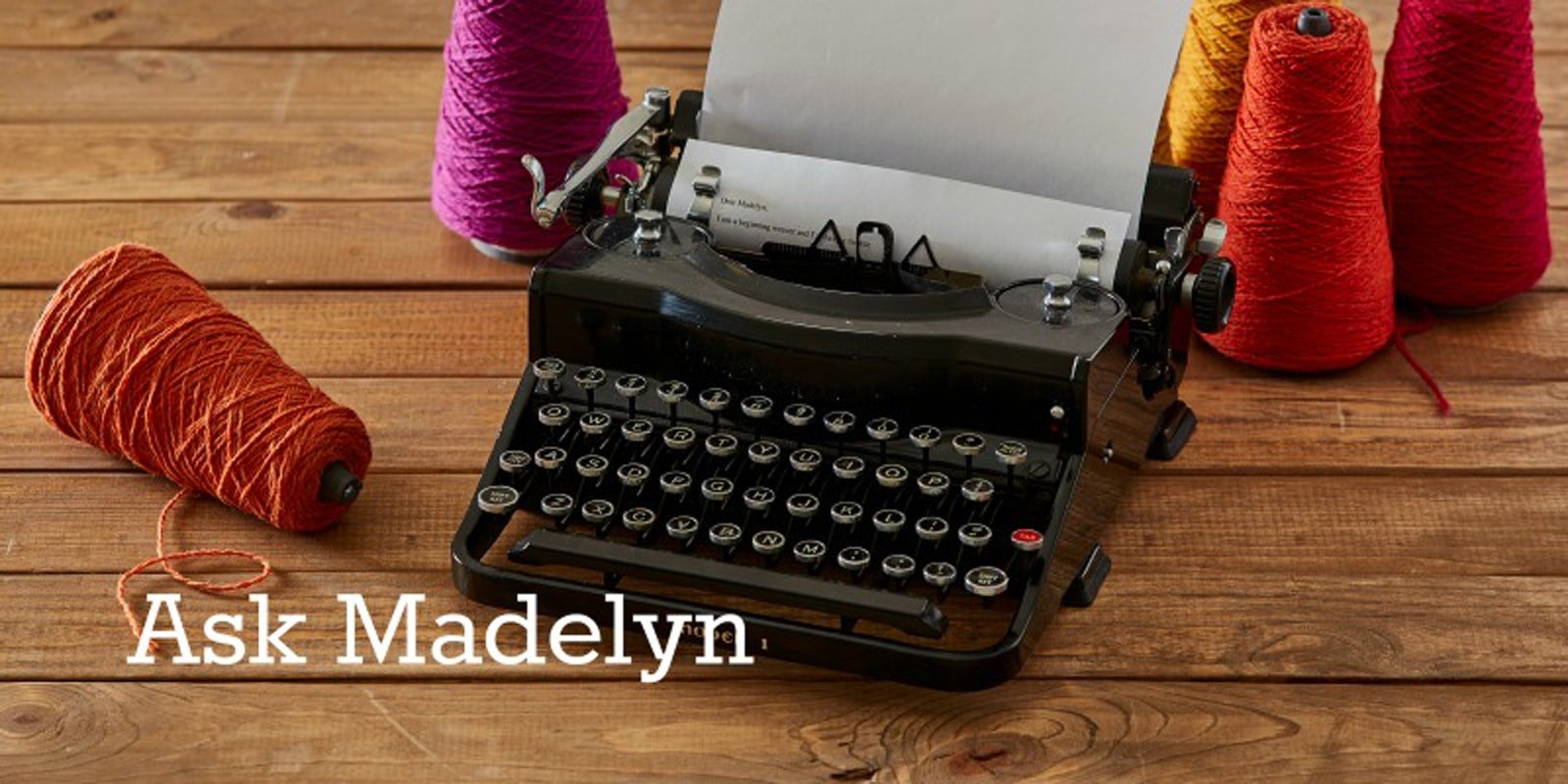Hi, Madelyn, I am a very, very novice weaver and am trying to figure out the best way to learn about different yarn sizes and types. Everything I find seems to be about knitting yarns, not weaving yarns, and trial and error when buying yarns can get very expensive. Any ideas?
Thanks so much, —Jan Rayford
Hi Jan!
Your question is probably one that every weaver asks when starting out. I was just going through a file cabinet drawer full of my first weaving year’s effort at understanding yarns. I taped every yarn I could find (taking snips from guild members’ stashes) on a 3 x 5 card and wrote down the fiber, yd/lb, and any comments the owner would share with me. Then I filed the cards by yarn size, finest to thickest. While I enjoyed this process and it took me into the studios of many weavers (as they probably rolled their eyes in amusement), it was not a productive exercise. It would make even less sense now, since so much information is available digitally. Not only that, but there are a few basic yarns that weavers use most—you don’t have to know about all that many.
So, the first thing you need to do is download the Master Yarn Chart. It lists all of the yarns used in Handwoven since 2000 and gives their sizes (yd/lb) and appropriate setts (how many warp threads to use per inch). Then, take a look at the projects in several issues of Handwoven You’ll discover that some of the yarns (10/2 pearl cotton, 5/2 pearl cotton, some specific wools, linens, Tencel, and silks) are used the most. To learn about them, the best thing to do is to weave a project from Handwoven that uses them. Some yarn retailers offer kits for these projects and for others. Kits include only the amount of yarn you need for the project. This often means small amounts of many colors, which would cost a lot more to buy individually on cones or skeins. When you are looking at the projects, also pay attention to the yarns that are used for the ones you really like. That’s the place to start as you build your stash.
Hope this helps!
—Madelyn

